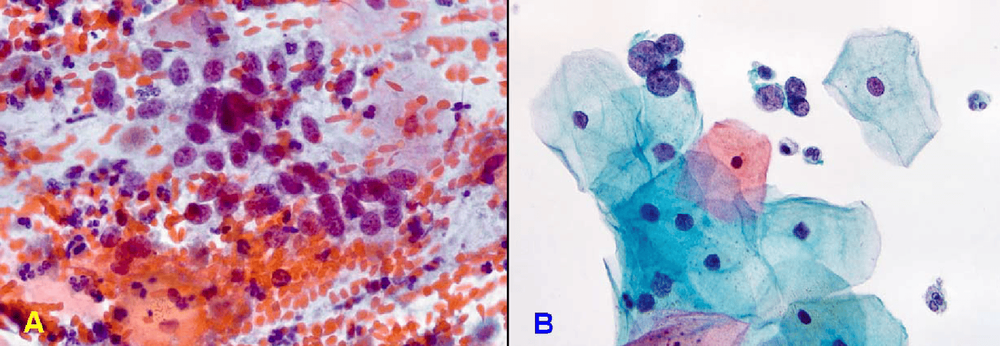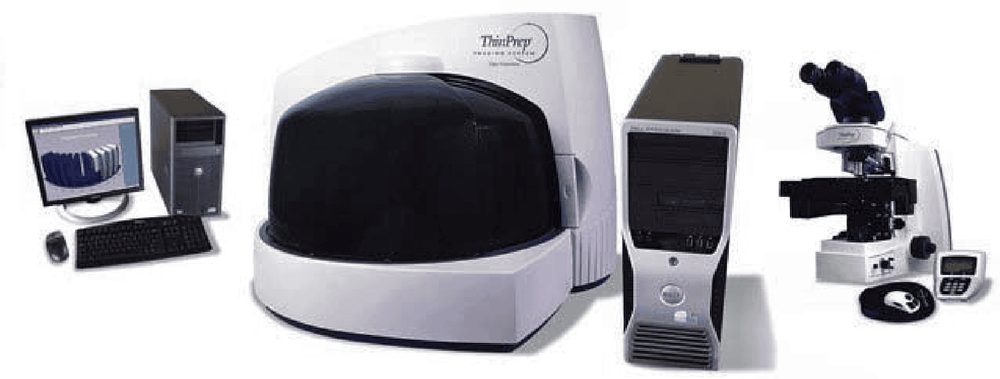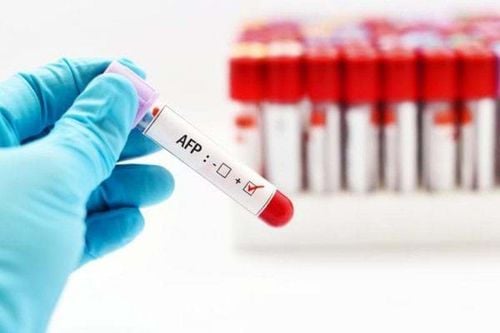This is an automatically translated article.
The article is made by Master, Doctor Bui Thi Hong Khang - Pathologist - Laboratory Department - Vinmec Central Park International General Hospital.
ThinPrep cervical cytology test is a new test put into use since 1996 belonging to automated cytology technique or liquid based cytology technique with advantages than routine cervical cytology (PAP).
We will learn about this test and new advances in the field.
1. Liquid based cytology
In the routine Papanicolaou test, the vagino-cervical cytology smear is performed manually, which has the disadvantage of not being able to transfer all the cells present on the wooden stick, brush or brush to the slide (only transferable). up to 2/3 of the cell count), the smear may be too thick, containing a lot of blood, white blood cells, mucus, or necrosis; As a result, cancer cells are obscured and missed under the microscope, leading to lawsuits between the patient and the cytologist. Since 1996, a new cytological technique - cytology in liquids has been put into use. The name liquid comes from the fact that the cells present on the sampler are completely placed in a preservative solution that is capable of immobilizing cells (with methanol or ethanol), dissolving red blood cells and mucus, and inhibiting cell proliferation. fibrin formation, preventing cell clumping during preparation; The cells are then spread in a thin layer on the slide using an automated device. This new technique makes it possible to recover the collected cells, to easily observe the morphological abnormalities of the cells under the microscope, to increase the sensitivity of cytology but also to increase the cost to the human. sick. (Figure 1, 2)
Figure 1: Comparison of routine Papanicolaou smear and cytological smear in liquid.

Hình 2: So sánh giữa phết tế bào cổ tử cung phết bằng tay, tế bào biểu mô bị hồng cầu che khuất (A) và phết bằng kỹ thuật tế bào học trong chất lỏng, tế bào biểu mô hiện rõ, nền lam không còn hồng cầu (B).
There are 2 types of liquid cytology techniques being used with different operating principles: Thinprep and Surepath. Thinprep technique is currently being used in major hospitals in Ho Chi Minh City.
2. Thinprep . Cervical cytology technique
Thinprep technique is performed according to the principle of membrane filtration (membrane filtration). A wooden stick, brush or swab containing the specimen is swirled in a vial of Thinprep storage solution (20 ml) to transfer all cells into it. Transfer the vial into the Thinprep machine; In this automated device, a cylindrical tube (one end sealed by a 20mm diameter polycarbonate filter, the other end connected to a suction) is dipped into the vial, rotated and aspirated, to dissolve red blood cells and mucus. then suck the fluid through the filter; Epithelial cells are retained and evenly distributed across the membrane.
The membrane filter was applied to the slide to transfer cells and the smear was fixed in 95% ethanol. Remove the fixed slide from the machine and proceed with Papanicolaou staining. The fluid remaining in the Thinprep vial is kept for HPV testing when indicated.

Hinh 3: Lọ chứa 20ml dung dịch Thinprep (A); Máy tự động Thinprep (B); Quy trình hút tế bào lên màng lọc và áp lên lam (C); tiêu bản có một lớp mỏng tế bào hình tròn đường kính 20mm (D).
3. Surepath technique
Surepath technique is performed according to the principle of combining density gradient centrifugation and gravity sedimentation. Cells from the sampler were transferred to a vial containing Surepath storage solution (2 ml), which was placed in a centrifuge tube containing a density gradient solution. After centrifugation, epithelial cells will gather at the bottom of the tube, be aspirated and put into another tube and then transferred to the PrepStain machine. In this automated device, the solution containing the cells is placed into cylindrical tubes attached to the slide, the cells slowly settle under gravity, forming a thin layer 13mm in diameter. Remove the slide from the machine, fix with 95% ethanol and stain Papanicolaou.

Hình 4: Lọ chứa dung dịch Surepath (A); dung dịch chứa tế bào (màu đỏ) được cho vào ống chứa sẵn dung dịch gradient mật độ (màu trắng) (B); sau khi ly tâm, tế bào biểu mô tụ ở đáy ống (C), được chuyển qua máy PrepStain (D), tế bào lắng xuống trong ống hình trụ theo trọng lực lên bề mặt lam (E); tiêu bản sẽ có một lớp mỏng tế bào hình tròn đường kính 13mm (F).
4. Automatic screening
Reading cells under the microscope is quite a tedious job because it requires scanning the entire specimen, so there is a rule not to read more than 100 specimens/day/person. In order to limit the possibility of reading cell lesions due to overload, modern laboratories have introduced equipment systems capable of automatic screening and marking on the slides of suspicious areas. . Staff will examine these areas directly under the microscope. For example, the Thinprep imaging system for Thinprep specimens, the BD focalpoint slide profiler system for Surepath specimens.

Hình 5 : Hệ thống Thinprep imaging system có khả năng đọc sàng lọc tự động.
The package of screening and early detection of gynecological cancer at Vinmec International General Hospital is built for the following customers:
Female customers with abnormal symptoms such as: Abnormal vaginal bleeding; Menstrual problems; Abnormal vaginal discharge (with a bad smell, a different color than usual); Vaginal pain, itching.... Female client has several risk factors such as poor personal hygiene, unsafe sex, abortion,... Female client has symptoms of infection other. Gynecological cancer screening and early detection package helps customers check gynecological function. Carry out necessary tests to help detect early diseases: cervical - uterine - ovarian cancer even when there are no symptoms.
For advice and to register for an appointment, you can contact the nationwide Vinmec hospital and clinic system HERE.














